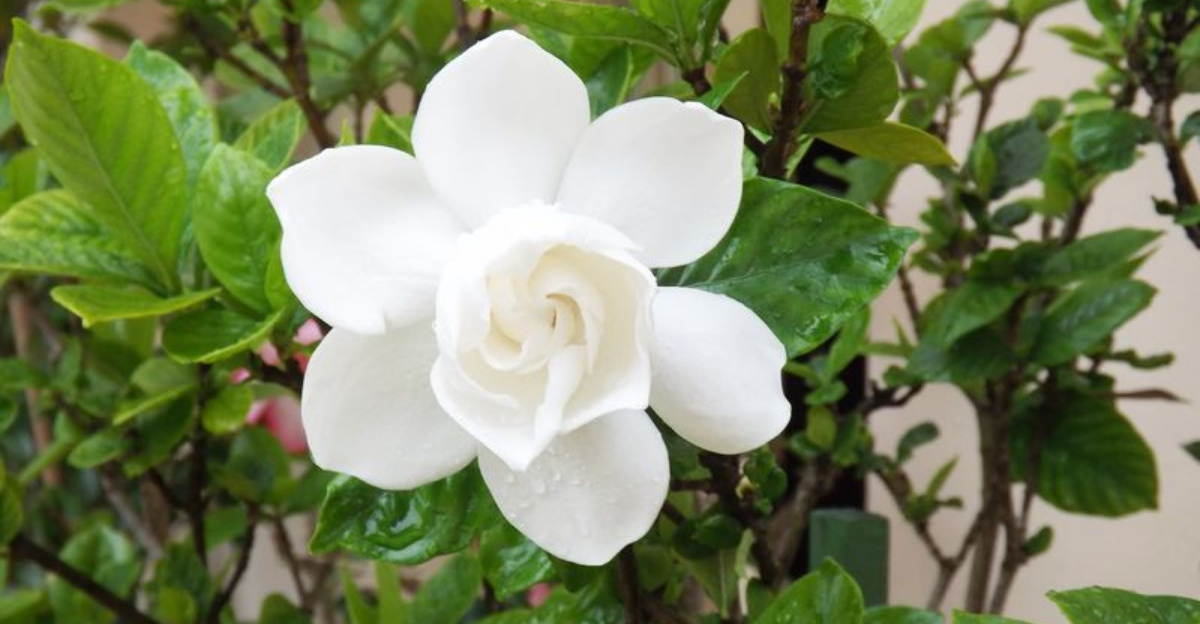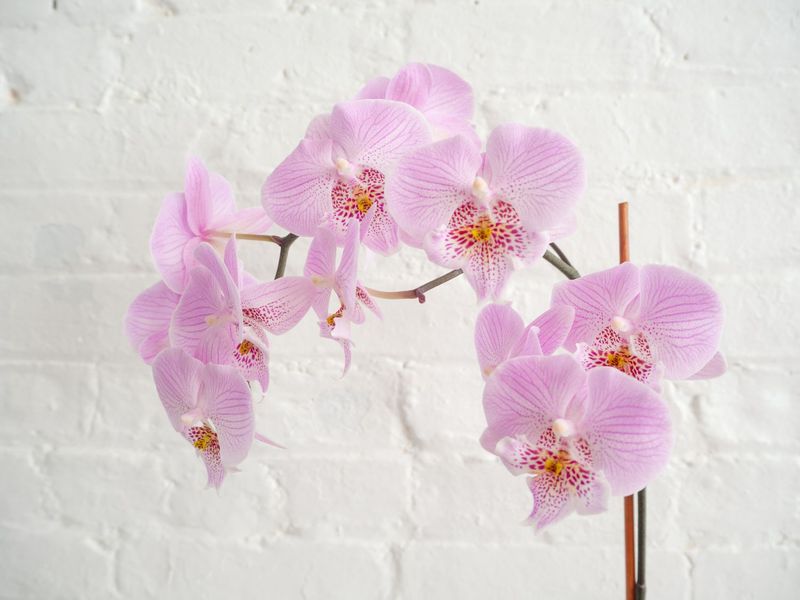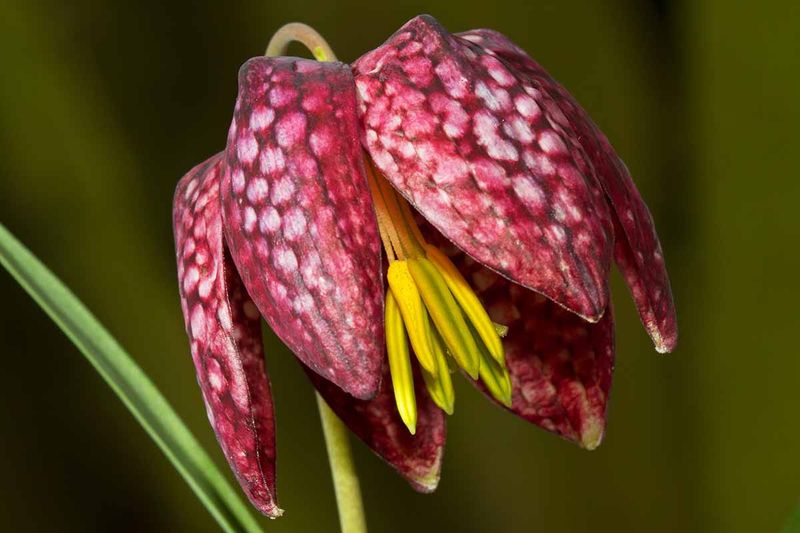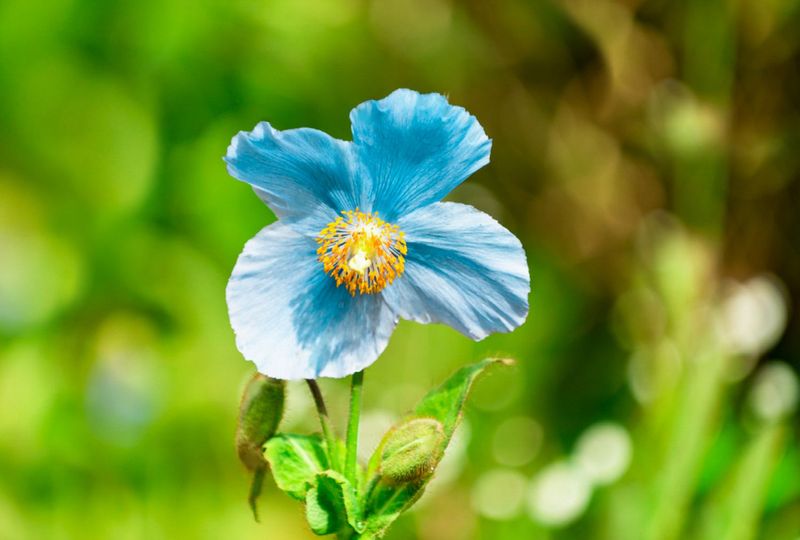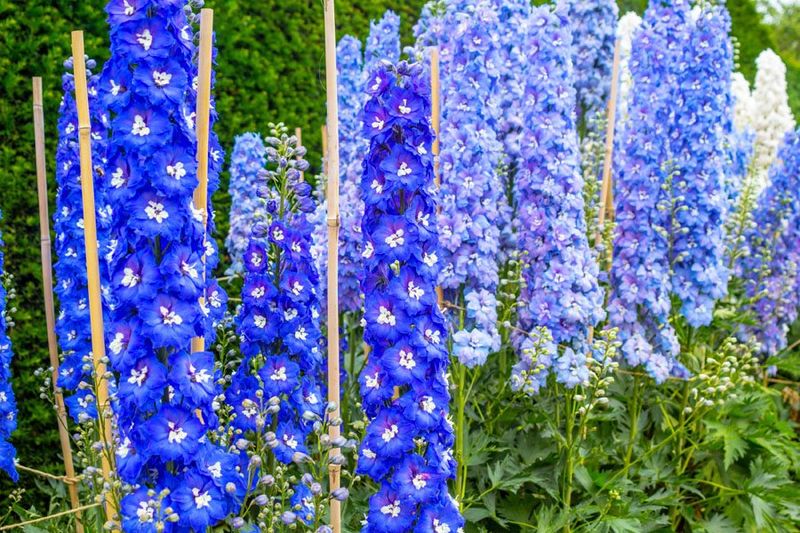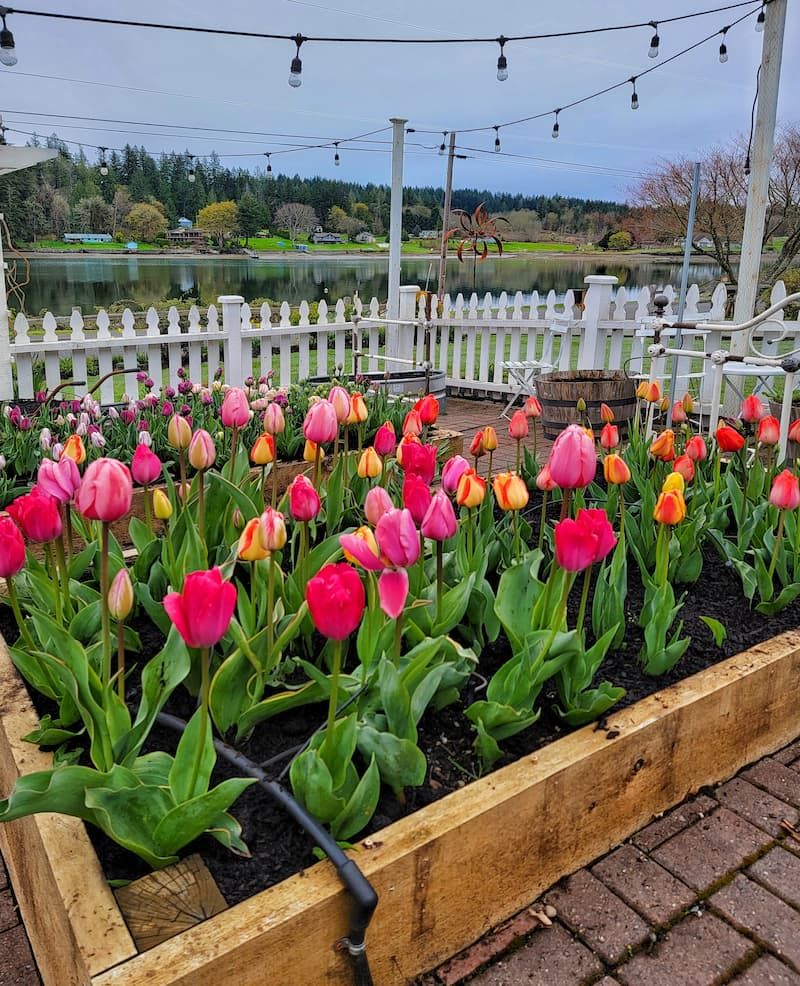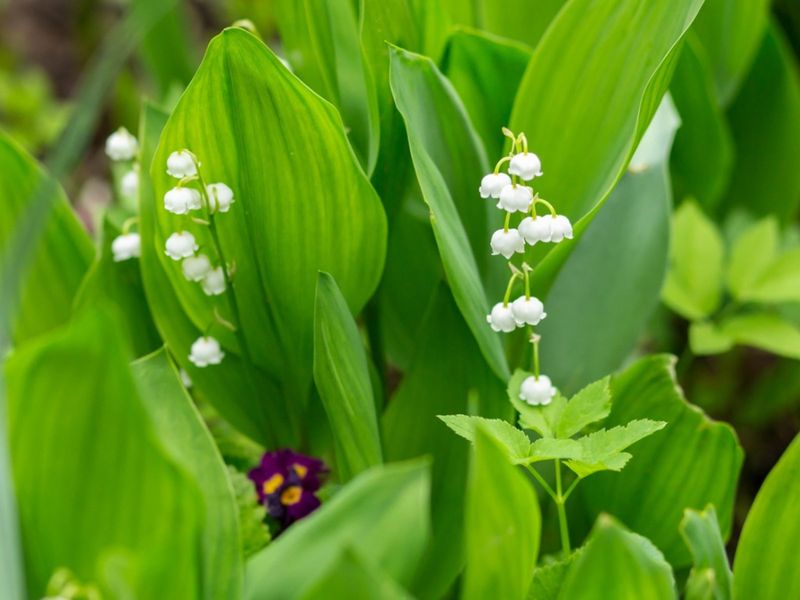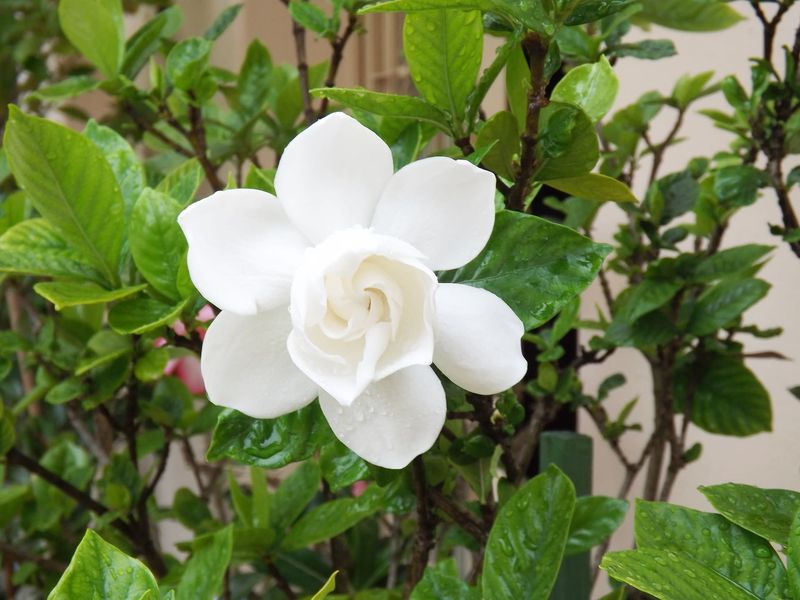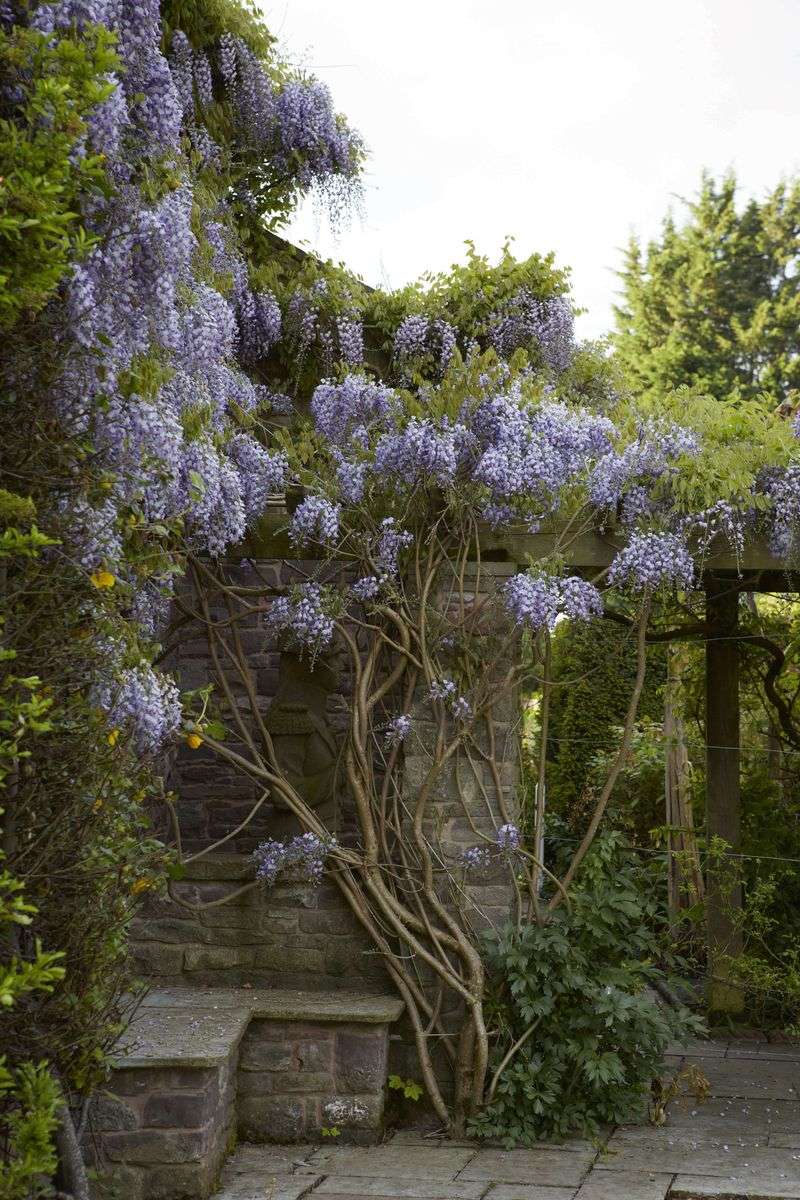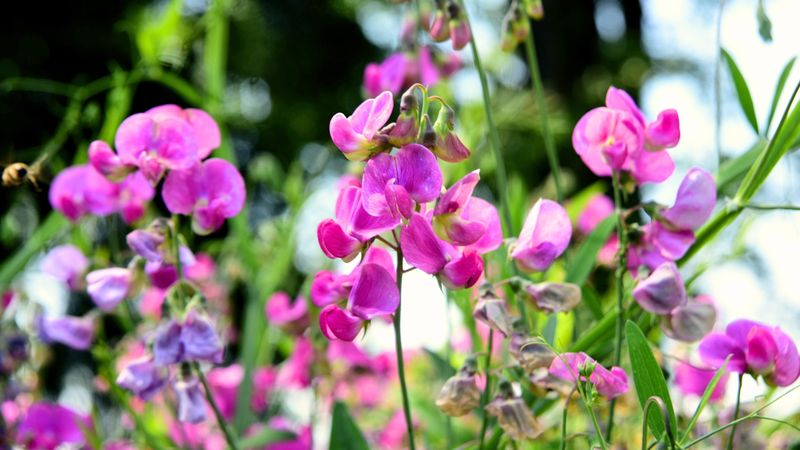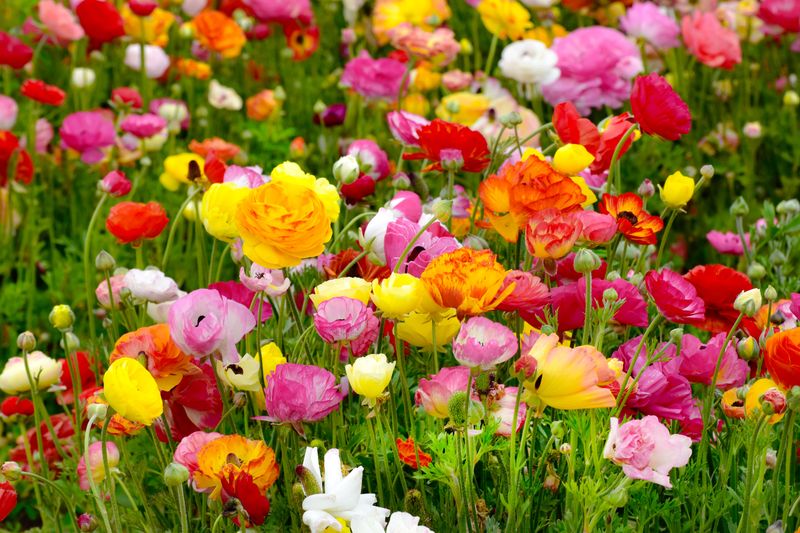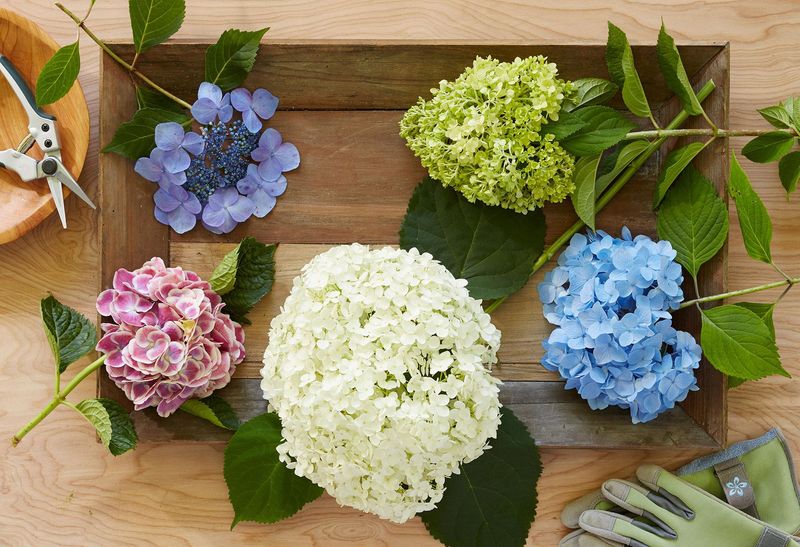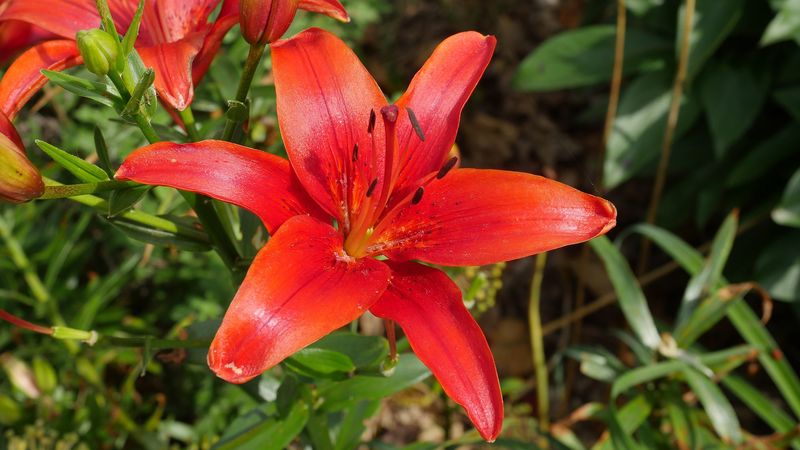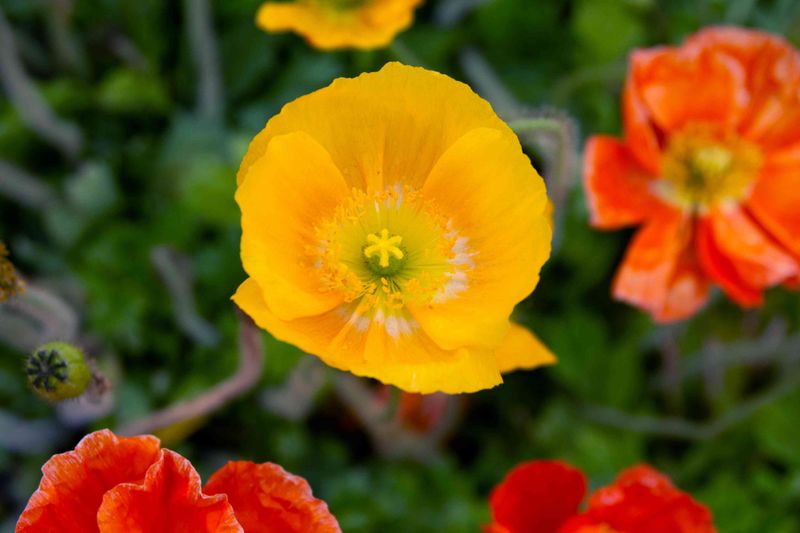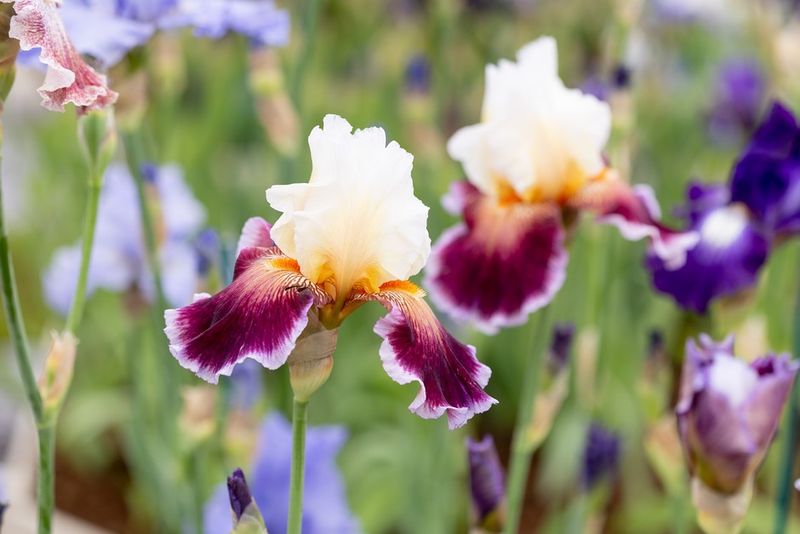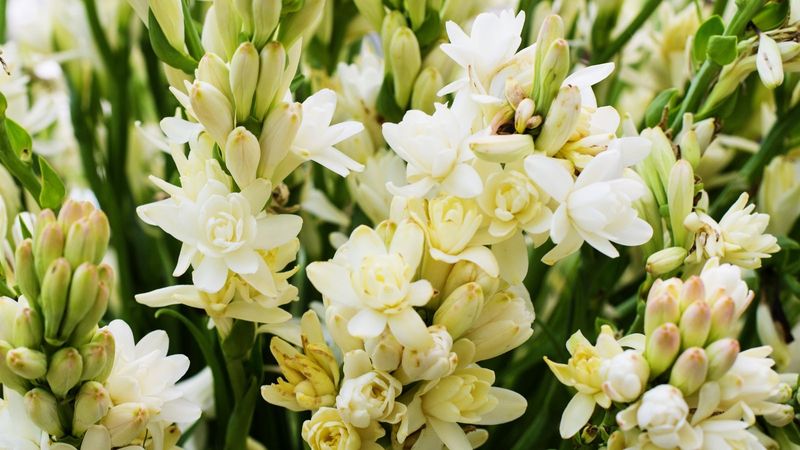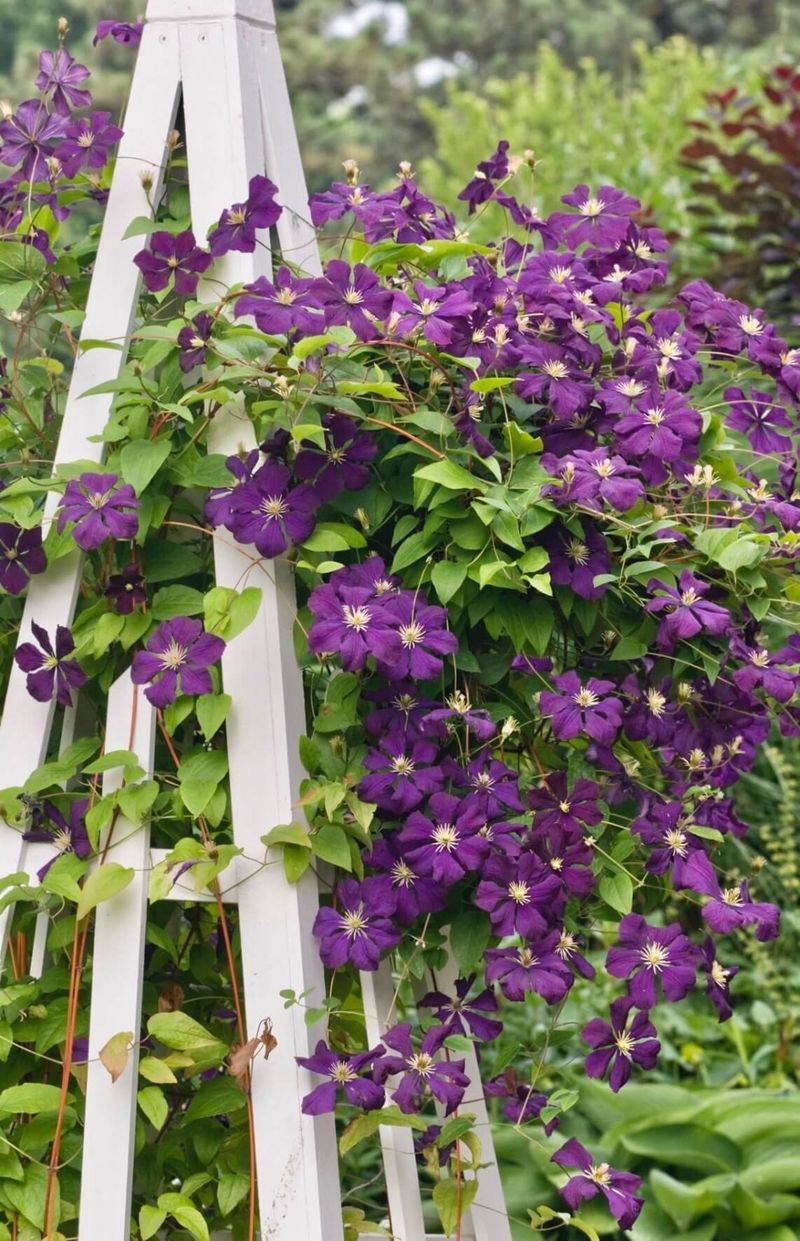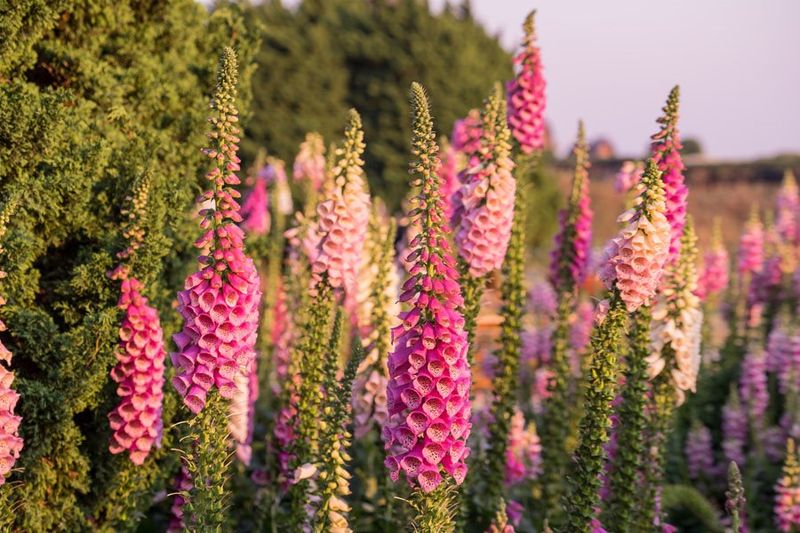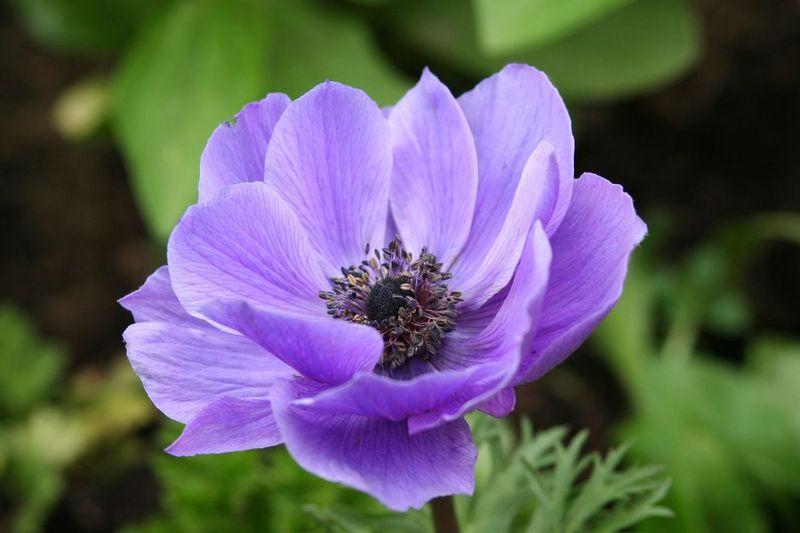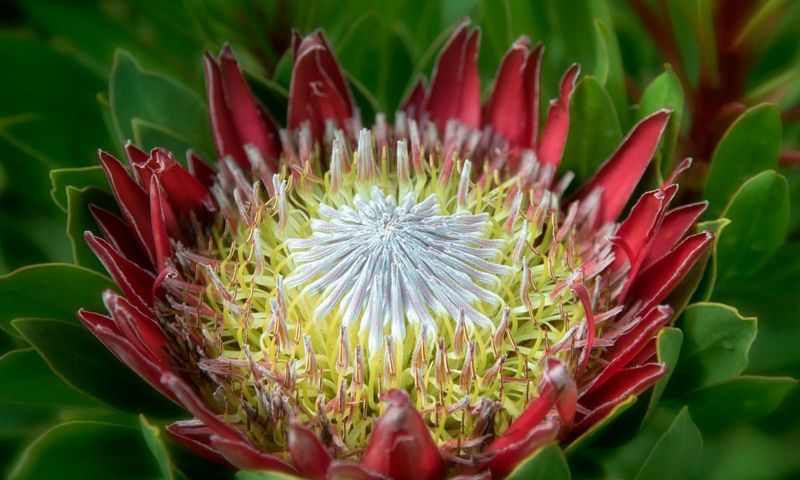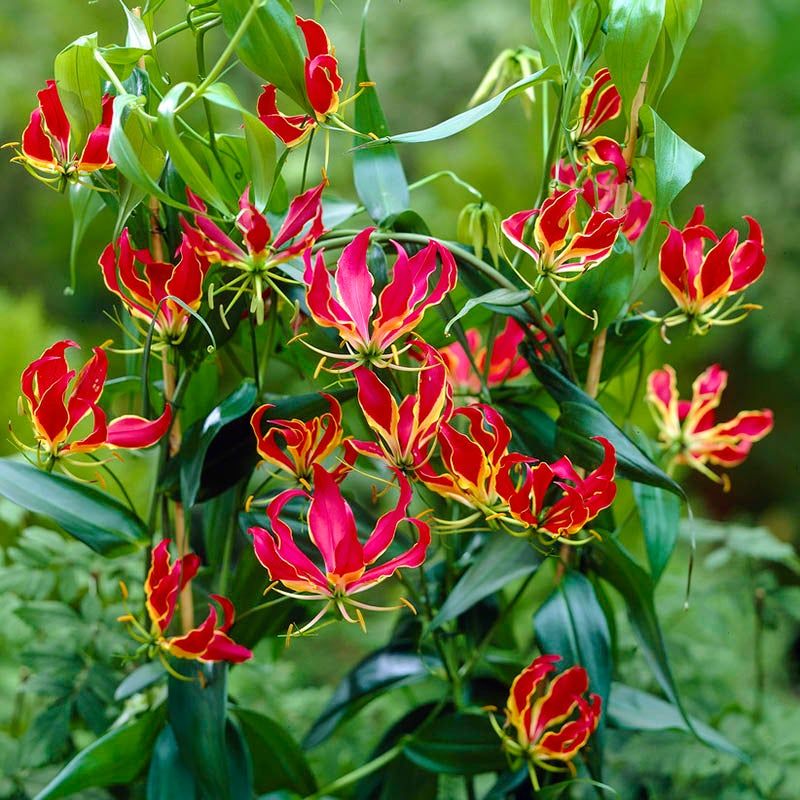Flowers often captivate us with their beauty, but some come with a set of challenges that can frustrate even the most seasoned gardeners.
These 24 flowers, while undeniably stunning, present unique hurdles that make them difficult to cultivate and maintain. From climate sensitivity to specific soil requirements, these flowers demand patience, care, and a touch of horticultural expertise.
Whether it’s their fussy nature or the precise conditions they need to thrive, these blooms can be a gardener’s dream and nightmare in equal measure.
1. Orchid
Orchids, with their exotic allure and regal poise, are often considered the crown jewels of houseplants. However, their demands can daunt even experienced growers.
These beauties require precise light conditions, meticulous watering schedules, and good airflow. Overwatering or neglecting their light needs can lead to a quick demise. Their aerial roots need careful attention, making them a test of patience and dedication.
Yet, the sense of accomplishment from a blooming orchid is unparalleled. For best results, mimic their natural environment by providing indirect sunlight and maintaining high humidity.
2. Fritillaria
Fritillarias are known for their exotic, pendulous blooms that add a dramatic flair to any garden. But their cultivation can be tricky. These plants detest soggy soil and require excellent drainage to prevent root rot.
Planting them in a raised bed or well-drained container can help. Fritillarias also need a period of cold dormancy, making them unsuitable for warmer climates.
Their unconventional beauty and intriguing pattern make the effort worthwhile for dedicated gardeners. A quirky fact: some species emit a faint skunky smell, believed to deter pests from their vicinity.
3. Himalayan Blue Poppy
The Himalayan Blue Poppy is a sight to behold with its ethereal blue petals. Originating from the cool, damp regions of the Himalayas, it poses a challenge for gardeners elsewhere.
These poppies crave moist, cool conditions, making them hard to grow outside their native habitat. They require constant moisture without becoming waterlogged, a delicate balance that can frustrate growers.
Partial shade and rich, well-drained soil are key to success. Despite their finicky nature, their rare color and elegance make them a coveted addition to any garden.
4. Camellia
Camellias are synonymous with elegance, providing stunning blooms in shades ranging from white to deep red. However, they can be temperamental. These shrubs require acidic soil and don’t take kindly to windy spots, which can damage their delicate flowers.
To keep them thriving, plant camellias in a sheltered location with dappled sunlight. Regular mulching with pine needles can help maintain the desired soil acidity.
With proper care, these beauties reward gardeners with a spectacular floral display that can brighten up any landscape.
5. Delphinium
Delphiniums are known for their towering spires of vibrant blooms, adding a bold splash of color to gardens. Yet, their upkeep can be demanding. These flowers are prone to flopping and require sturdy staking to remain upright.
Additionally, they are susceptible to pests like aphids and slugs. Delphiniums thrive in cool climates and need rich, well-drained soil to flourish. Despite their challenges, the visual impact of a blooming delphinium bed is worth the extra effort.
Fun fact: Delphiniums are named after the Greek word ‘delphinion,’ meaning dolphin, due to their dolphin-shaped flowers.
6. Tulip
Tulips are classic spring beauties that grace gardens with their vibrant colors. However, they are often treated as annuals because of their poor reblooming tendencies.
Tulips prefer well-drained soil and a sunny location, but too much moisture can lead to bulb rot. To encourage perennial growth, plant bulbs deeply and consider using bulb boosters.
Despite their finicky nature, tulips symbolize rebirth and are a favorite for springtime displays. An interesting tidbit: during the 17th-century ‘Tulip Mania,’ these flowers were traded as valuable assets in the Netherlands.
7. Lily of the Valley
Lily of the Valley enchants with its sweet fragrance and dainty bell-shaped flowers. Despite its charm, it can be invasive and difficult to relocate. These plants thrive in shaded areas with moist, well-drained soil.
Once established, they spread rapidly and can overtake a garden if not controlled. Transplanting requires care to avoid disturbing their shallow roots.
With diligence, these flowers offer a fragrant carpet of white blooms each spring. A word of caution: all parts of the plant are toxic if ingested, so handle with care.
8. Gardenia
With its creamy-white petals and intoxicating fragrance, the gardenia is a garden showstopper. Yet, its beauty comes at a cost. These flowers demand precise humidity levels and acidic soil to thrive.
If the pH isn’t just right, the gardenia will sulk, refusing to bloom. Gardenias also despise drafts and sudden temperature changes, making them quite the divas in the plant world.
Despite these challenges, the reward of their heavenly scent is enough to make many gardeners persevere. A tip for enthusiasts: keep them in well-draining soil and avoid overwatering.
9. Wisteria
Wisteria captivates with cascading clusters of fragrant flowers, turning any structure into a floral spectacle. However, patience is key, as these vines can take years to bloom.
Once established, they can become invasive, requiring regular pruning to keep them in check. Wisteria prefers a sunny spot with well-draining soil and benefits from occasional fertilization.
Despite their unruly nature, the breathtaking floral display they offer makes them a favorite among gardeners. Fun fact: in Japan, wisteria symbolizes love and longevity, often featured in cultural festivals.
10. Sweet Pea
Sweet peas are cherished for their enchanting fragrance and charming flowers in pastel hues. Yet, they can be finicky about heat and require constant deadheading to prolong blooming.
Plant sweet peas in cool weather and provide a trellis for support, as they are natural climbers. Regularly remove spent blooms to encourage new growth. Despite their demands, sweet peas add a touch of whimsy and fragrance to any garden or bouquet.
A fun tidbit: sweet peas were popularized in the Victorian era, symbolizing delicate pleasure and bliss.
11. Peony
Peonies are adored for their large, romantic blooms and sweet fragrance. However, planting them too deep can prevent flowering, and they dislike being disturbed once settled. Ensure peonies have plenty of sunlight and well-drained soil to thrive.
Dividing them should be done sparingly and only when necessary. With proper care, peonies reward gardeners with stunning blooms that can last for decades.
A historical note: peonies have been cultivated for over 2,000 years, valued in Chinese culture for their beauty and medicinal properties.
12. Ranunculus
Ranunculus flowers are prized for their tissue-paper-like petals and vivid colors, making them a florist’s favorite. Yet, their bulbs are fragile and prone to rot if overwatered. Plant them in well-draining soil and ensure they receive full sun for best results.
Ranunculus can be grown from tubers, which should be soaked before planting to help establish.
Despite their delicate nature, their striking blooms offer a pop of color to any arrangement. A gardening tip: allow foliage to die back naturally to nourish the bulbs for future growth.
13. Hydrangea
Hydrangeas are beloved for their voluminous blooms and ability to change color with soil pH. However, they can be finicky about pruning and require specific conditions to thrive. Plant hydrangeas in well-draining soil with morning sun and afternoon shade.
Adjust soil pH to achieve desired bloom colors, with acidic soil producing blue hues and alkaline soil resulting in pink. Despite their needs, hydrangeas offer a stunning display that changes with the seasons.
Fun fact: hydrangeas symbolize gratitude and heartfelt emotions, making them popular in weddings.
14. Lily (Oriental or Asiatic)
Oriental and Asiatic lilies are showstoppers with their bold colors and fragrant blooms. However, they attract pests like aphids and require division every few years to maintain vigor.
Plant lilies in well-drained soil with plenty of sunlight, and provide support to prevent bending. Deadheading faded flowers encourages more blooms. Despite their upkeep, the dramatic impact of a lily garden is unmatched.
An interesting fact: lilies have been cultivated for over 3,000 years and hold cultural significance in many societies, symbolizing purity and refined beauty.
15. Dahlia
Dahlias are admired for their bright and bold blooms, adding flair to any garden. Yet, they require digging up in cold climates for winter storage. Plant tubers after frost in well-draining soil with full sun.
Regular watering and fertilizing promote healthy growth, but avoid waterlogged conditions. Despite their demands, dahlias offer a dazzling display of colors and shapes that draw admiration.
A quirky fact: the dahlia is the national flower of Mexico, where it was first discovered by the Aztecs and used for its edible tubers.
16. Poppy (especially Icelandic)
Icelandic poppies are ethereal with their delicate petals and bright hues, yet they are short-lived and sensitive to disturbances. Plant in well-draining soil with plenty of sun but avoid moving them once established.
These poppies thrive in cooler climates, and deadheading can encourage a longer blooming period. Despite their fleeting presence, Icelandic poppies bring a touch of whimsy and color to gardens.
A fun fact: poppies have been used throughout history in various cultures for their symbolic meanings, from sleep to remembrance.
17. Bearded Iris
Bearded irises are known for their striking form and vibrant colors, resembling a painter’s palette. However, their rhizomes must be exposed and can be prone to rot if planted too deeply.
These flowers prefer sunny spots with well-draining soil to prevent water accumulation. Dividing the rhizomes every few years keeps them healthy and encourages blossoming.
Despite their care requirements, the elegance and diversity of irises make them a garden favorite. An intriguing tidbit: irises are named after the Greek goddess of the rainbow, reflecting their wide color range.
18. Tuberose
Tuberose is celebrated for its intense fragrance, captivating the senses with its sweet, heady scent. However, these flowers are hard to establish and sensitive to cold. Plant tuberose bulbs in warm, well-draining soil with full sunlight.
Protect them from frost and provide consistent moisture for optimal growth. With patience, the enchanting aroma of tuberose can transform a garden into a fragrant paradise.
A cultural note: tuberose is often used in perfumery and holds significance in various rituals for its aromatic properties.
19. Clematis
Clematis, with its variety of colors and stunning flowers, is a garden climber’s delight. Yet, its preference for “cool roots, warm tops” requires careful placement. Plant clematis with their roots in shade and ensure they receive ample sunlight on their foliage.
Pruning can be complex, as different varieties have specific needs. Despite their finickiness, a flourishing clematis can turn fences and arbors into floral masterpieces.
Fun fact: clematis is known as the “queen of climbers,” adding a touch of elegance to vertical spaces.
20. Bird of Paradise
The Bird of Paradise boasts exotic blooms that resemble a colorful bird in flight, making it a standout in tropical gardens. However, patience is key, as these plants can take years to flower. They require consistent warmth and indirect sunlight to thrive.
Plant in well-draining soil and water moderately, avoiding soggy conditions. Despite their slow growth, the unique beauty of their blooms makes the wait worthwhile.
A fascinating tidbit: the Bird of Paradise is native to South Africa and symbolizes freedom and joy.
21. Foxglove
Foxgloves are renowned for their towering spikes of bell-shaped flowers, adding drama to any garden. Yet, they are biennial, requiring two years to complete their life cycle, and are toxic if ingested.
Plant foxgloves in partial shade with well-drained soil for best results. Deadheading can extend blooming, but allow some flowers to seed for the next generation. Despite their toxicity, foxgloves are beloved for their striking appearance.
An intriguing fact: the plant’s name is derived from the Old English “foxes glofa,” meaning fox’s glove, reflecting its flower shape.
22. Anemone
Anemones, with their delicate beauty and vibrant colors, are a garden favorite. However, their tubers can be slow to start and require patience. Plant in well-draining soil with partial shade for optimal growth.
Once established, they offer a burst of color in spring and fall. Despite their challenges, anemones bring a touch of elegance and movement to any garden.
An interesting tidbit: anemone flowers are often associated with the wind, as their name is derived from the Greek word “anemos,” meaning wind.
23. Protea
Proteas are exotic and architectural, making a bold statement in gardens. However, they have very specific soil and temperature needs. These flowers thrive in well-drained, acidic soil and require full sun.
They are drought-tolerant but need protection from frost. Despite their demands, proteas offer a unique visual appeal that is hard to match.
A fun fact: proteas are native to South Africa and named after the Greek god Proteus, who could change his form, reflecting the flower’s diverse shapes and colors.
24. Gloriosa Lily
The Gloriosa Lily is a captivating climber with flame-like petals that add a touch of the tropics to any garden. Yet, it is toxic and requires staking to support its growth. Plant in well-draining soil with plenty of sunlight, and protect from strong winds.
Despite its toxicity, the gloriosa lily is admired for its striking appearance and vibrant colors. An intriguing note: the gloriosa lily is the national flower of Zimbabwe, symbolizing beauty and passion in the region.
